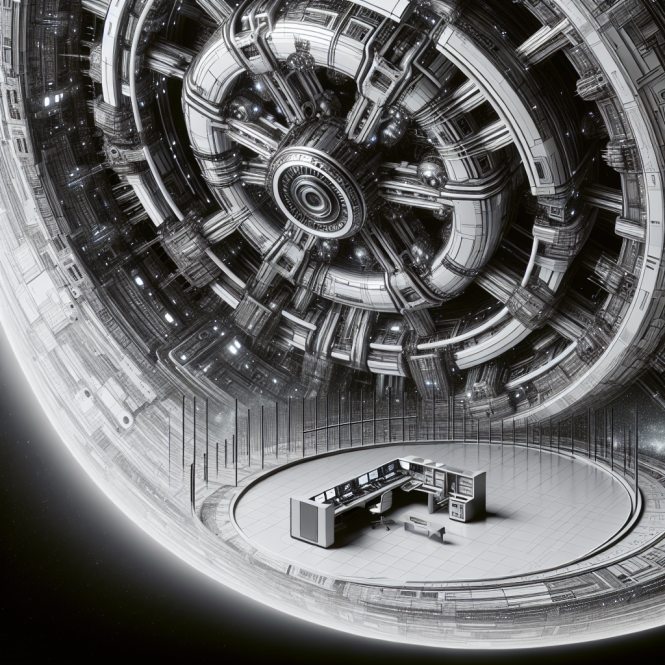
Editor: Vladimir Bajic | Tactical Investor
3D Printing Ideas: Unlocking the Future of Creativity and Innovation
July 7, 2024
Introduction
The realm of 3D printing has ushered in a new era of creativity and innovation, transforming the way we conceptualize, design, and manufacture objects. This revolutionary technology has captured the imagination of inventors, artists, and entrepreneurs alike, promising a future where the boundaries between imagination and reality are increasingly blurred. As we explore the vast potential of 3D printing ideas, we’ll delve into the psychological, technical, and cognitive aspects that drive this burgeoning field while drawing insights from experts across millennia.
The Evolution of 3D Printing
To truly appreciate the impact of 3D printing, we must first understand its historical context. While the technology is relatively new, the concept of creating three-dimensional objects from instructions has ancient roots.
Imhotep, the Egyptian polymath who lived around 2650 BC, might have marvelled at 3D printing technology. Known for his architectural innovations, Imhotep could have remarked, “Just as we build great monuments layer by layer, this new method of creation mirrors the very essence of construction, allowing ideas to take physical form with unprecedented precision.”
Fast forward to the Renaissance, and we find Leonardo da Vinci, the quintessential inventor and artist of the 15th century. His forward-thinking mind would likely have been fascinated by 3D printing. Da Vinci might have observed, “This technology is the ultimate fusion of art and science, allowing the mind’s creations to materialize with a fluidity that rivals nature itself.”
The Psychology of 3D Printing Innovation
The advent of 3D printing has tapped into several psychological phenomena that drive its rapid adoption and continued innovation.
Mass Psychology and the 3D Printing Revolution
The widespread excitement surrounding 3D printing is partly attributed to mass psychology. As more individuals and businesses adopt this technology, a collective enthusiasm emerges, creating a self-reinforcing cycle of innovation and adoption.
Dr Gustave Le Bon, the 19th-century sociologist known for his work on crowd psychology, might have noted, “The fervour surrounding 3D printing exemplifies how technological revolutions can capture the collective imagination, driving society towards a shared vision of the future.”
The Halo Effect in 3D Printing
The Halo Effect, a cognitive bias where positive impressions in one area influence opinion in another, plays a significant role in the perception of 3D printing technology. The association of 3D printing with cutting-edge innovation and futuristic potential creates a positive aura that extends to all aspects of the technology, sometimes overshadowing potential limitations or challenges.
Dr Edward Thorndike, who first described the Halo Effect in the early 20th century, might comment, “The perceived brilliance of 3D printing technology casts a favourable light on all its applications, potentially leading to overestimating its capabilities in certain contexts.”
Optimism Bias and 3D Printing Expectations
3D printing is rife with optimism bias, the tendency to overestimate the likelihood of positive outcomes. This bias fuels investment, research, and development in the sector, driving progress and potentially leading to unrealistic expectations.
Dr Tali Sharot, a contemporary neuroscientist studying optimism bias, might observe, “The inherent optimism surrounding 3D printing propels the field forward, but it’s crucial to temper enthusiasm with realistic assessments of the technology’s current limitations and future potential.”
Technical Analysis of 3D Printing Trends
From a technical analysis perspective, the 3D printing industry shows clear signs of growth and innovation. Market trends indicate a steady increase in consumer and industrial applications, with the global 3D printing market expected to expand significantly in the coming years.
Key indicators such as patent filings, research publications, and investment in 3D printing startups all show upward trajectories. When charted, these trends form a series of higher highs and higher lows, indicating a strong bullish sentiment in the market.
Dr Burton Malkiel, the renowned economist, might comment, “The consistent upward trend in 3D printing metrics suggests a fundamental shift in manufacturing paradigms, with potential long-term implications for global supply chains and localized production.”
Innovative 3D Printing Ideas
The versatility of 3D printing has led to a plethora of innovative applications across various fields. Here are some groundbreaking ideas that showcase the technology’s potential:
1. Bioprinting Organs and Tissues
One of the most promising applications of 3D printing is in medicine, specifically in bioprinting organs and tissues. This technology holds the potential to revolutionize transplant medicine and drug testing.
Dr Anthony Atala, a pioneer in regenerative medicine, notes, “3D bioprinting allows us to create complex tissue structures that mimic natural organs, opening new frontiers in personalized medicine and potentially addressing the critical shortage of donor organs.”
2. Sustainable Architecture
3D printing is transforming the construction industry, enabling the creation of complex, sustainable structures with minimal waste. From affordable housing solutions to avant-garde architectural designs, technology is reshaping our built environment.
The 20th-century architect and futurist Buckminster Fuller might have enthused, “3D printed architecture represents the pinnacle of doing more with less, allowing us to create resilient, efficient structures that harmonize with nature’s principles.”
3. Customized Consumer Products
One of 3D printing’s most appealing aspects for consumers is the ability to create highly personalized products. From custom-fitted shoes to customized jewellery, the technology enables a new era of mass customization.
Steve Jobs, the visionary co-founder of Apple, might have remarked, “3D printing brings the power of personalization to physical products, allowing individuals to express their uniqueness in tangible ways, much like how personal computers revolutionized digital creativity.”
4. Space Exploration and Off-World Manufacturing
NASA and other space agencies are exploring the use of 3D printing for off-world manufacturing, which could potentially enable long-duration space missions and even the colonization of other planets.
Dr. Wernher von Braun, the father of rocket technology, might have predicted, “3D printing in space will be as revolutionary as the development of multi-stage rockets, allowing us to establish self-sustaining colonies beyond Earth by manufacturing essential components on-site.”
5. Food Printing
The concept of 3D-printed food pushes the boundaries of culinary creativity and addresses issues of food sustainability and personalized nutrition.
Auguste Escoffier, the renowned chef who revolutionized French cuisine in the late 19th century, might have mused, “3D food printing represents a new frontier in gastronomy, allowing for unprecedented control over texture, flavour, and presentation while potentially addressing global nutrition challenges.”
Cognitive Biases in 3D Printing Innovation
Several cognitive biases influence how we perceive and develop 3D printing technologies:
1. Novelty Bias: The tendency to overvalue the new and exciting aspects of 3D printing may lead to overlooking more traditional, yet potentially more efficient, manufacturing methods in specific contexts.
2. Dunning-Kruger Effect: Individuals with limited knowledge of 3D printing may overestimate their understanding of its capabilities and limitations, potentially leading to unrealistic expectations or misapplications of the technology.
3. Confirmation Bias: Enthusiasts of 3D printing may seek information confirming their positive views while dismissing potential drawbacks or limitations of the technology.
4. Anchoring Bias: Initial impressions or experiences with 3D printing can disproportionately influence future perceptions and decisions related to the technology.
Dr Daniel Kahneman, Nobel laureate in economics for his work on decision-making and behavioural economics, might caution, “While 3D printing holds immense potential, we must be aware of our cognitive biases when evaluating its applications. Critical thinking and rigorous testing remain essential in separating innovative ideas from hype.”
Challenges and Considerations
Despite its vast potential, 3D printing faces several challenges that must be addressed for continued growth and innovation:
1. Material Limitations: Current 3D printing materials may not always match traditionally manufactured products’ strength, durability, or functionality.
2. Speed and Scalability: In terms of speed and cost-effectiveness, 3D printing often lags behind traditional manufacturing methods for mass production.
3. Intellectual Property Concerns: The ease of replicating designs raises questions about copyright infringement and intellectual property protection.
4. Quality Control: Ensuring consistent quality across 3D printed products remains challenging, especially in critical applications like medical devices.
5. Environmental Impact: While 3D printing can reduce waste in some applications, the environmental impact of materials used and energy consumption needs careful consideration.
Dr. W. Edwards Deming, the 20th-century quality management pioneer, might advise, “As with any manufacturing process, the key to successful 3D printing lies in rigorous quality control and continuous improvement. We must apply systematic thinking to overcome limitations and unlock the technology’s full potential.”
Future Directions and Innovations
The future of 3D printing holds exciting possibilities, with ongoing research and development in several key areas:
1. Multi-material Printing: Advancements in multi-material 3D printing will enable the creation of more complex, functional objects with varying material properties within a single print.
2. 4D Printing: This emerging technology involves 3D-printed objects that can change shape or properties over time in response to environmental stimuli, opening up new possibilities in adaptive and responsive materials.
3. Nanoscale Printing: The ability to 3D print at the nanoscale could revolutionize fields like electronics, medicine, and materials science.
4. AI-Driven Design Optimization: Artificial intelligence and machine learning algorithms are being developed to optimize 3D printable designs, potentially surpassing human capabilities in creating efficient, lightweight structures.
5. Sustainable Materials: Research into biodegradable and recycled materials for 3D printing aims to address environmental concerns and promote circular economy principles.
Dr Michio Kaku, the contemporary theoretical physicist and futurist, might predict, “The convergence of 3D printing with other emerging technologies like artificial intelligence, nanotechnology, and biotechnology will usher in an era of unprecedented creativity and problem-solving capacity, potentially addressing some of humanity’s greatest challenges.”
Conclusion
3D printing stands at the forefront of a new industrial revolution, unlocking unprecedented potential for creativity and innovation across diverse fields. From medicine to architecture, space exploration to culinary arts, this technology is reshaping our design, manufacturing, and problem-solving approach.
As we’ve explored, the journey of 3D printing is influenced by a complex interplay of psychological factors, market trends, and cognitive biases. Understanding these elements provides a richer context for appreciating the role of 3D printing in shaping our future.
The words of Imhotep, the ancient Egyptian polymath, resonate through time: “True innovation lies not in the tool itself, but in the vision of those who wield it.” As we continue to push the boundaries of what’s possible with 3D printing, this human vision, creativity, and ingenuity will ultimately determine the impact of this transformative technology.
The future of 3D printing appears boundless, with ongoing research and innovation promising to unlock even more potential applications and benefits. As technology matures and becomes more accessible, we expect to see a proliferation of ideas and innovations that will continue to reshape our world in ways we can scarcely imagine.
In the spirit of Leonardo da Vinci, who bridged art and science with his inventive mind, 3D printing represents a powerful tool for turning imagination into reality. It challenges us to think differently, to question established norms, and to envision new possibilities. As we embrace this technology and its potential, we stand on the cusp of a new era of creativity and innovation, where the only limit is our imagination.










